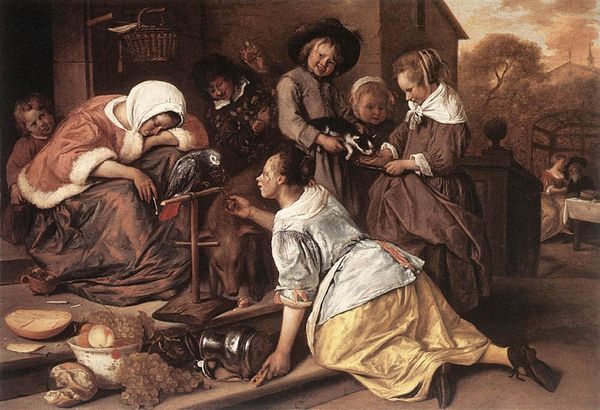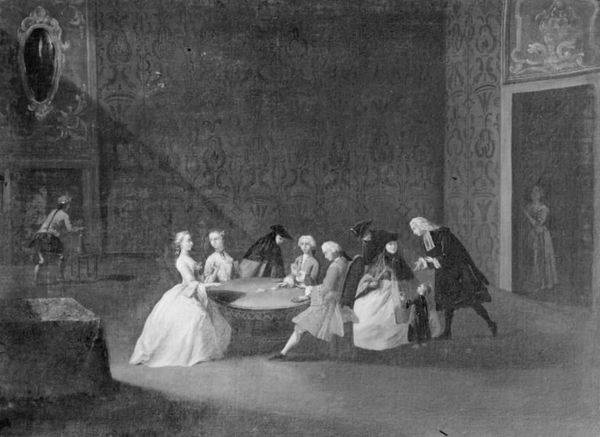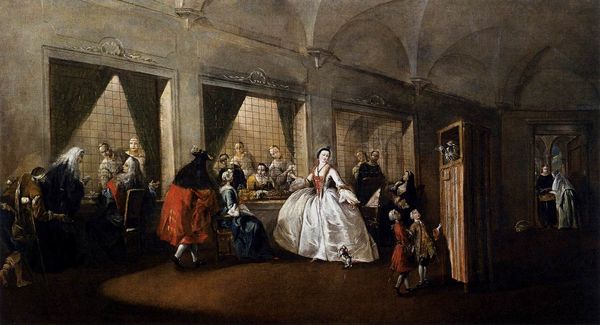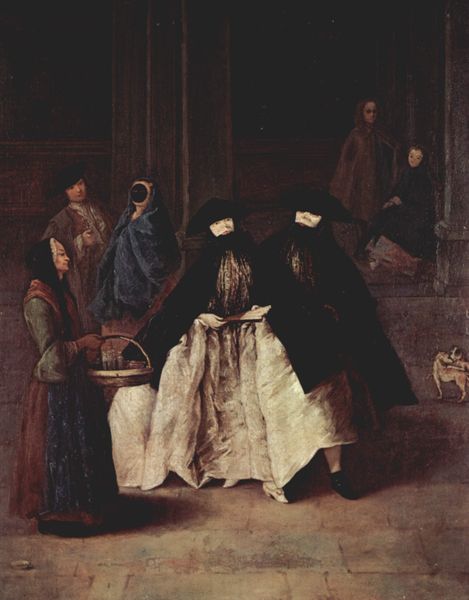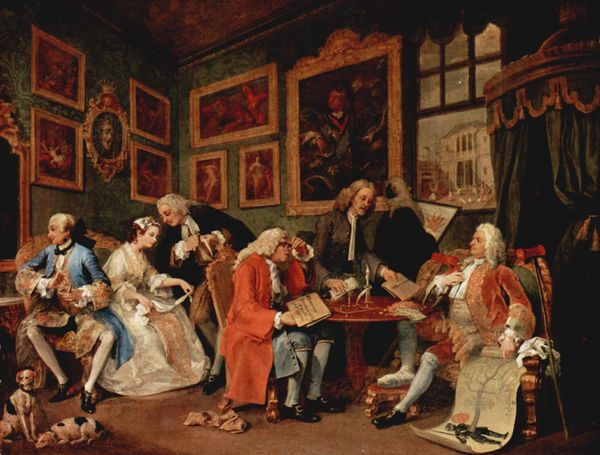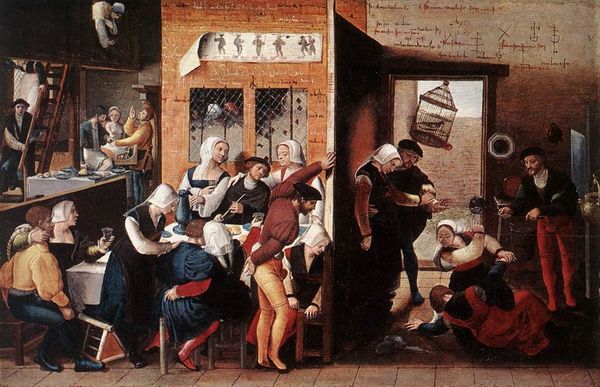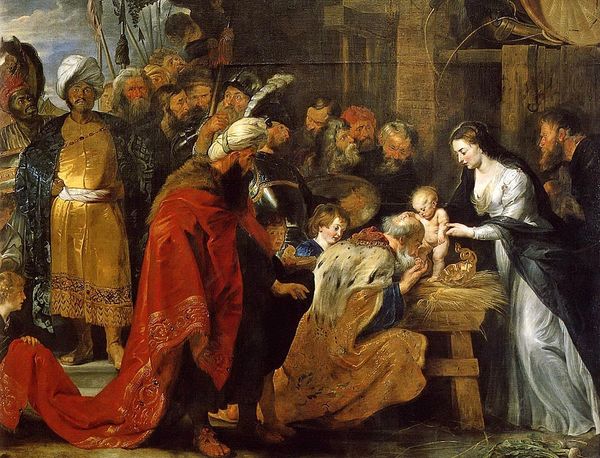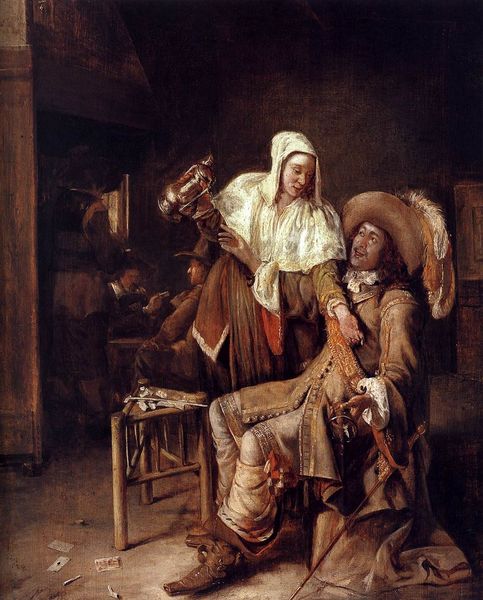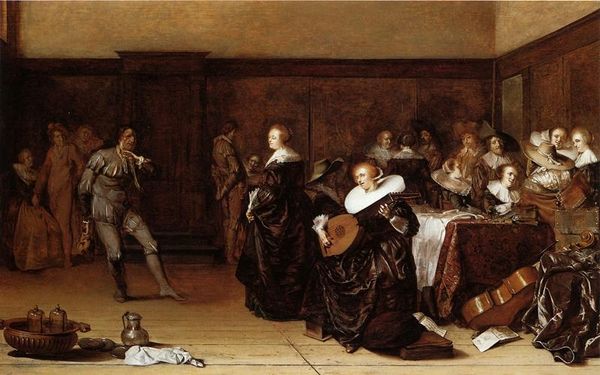
painting, oil-paint
#
portrait
#
venetian-painting
#
painting
#
oil-paint
#
group-portraits
#
genre-painting
#
rococo
Copyright: Public domain
Editor: This is Pietro Longhi's, “The Ridotto," housed at the Accademia Carrara. It appears to be an oil painting depicting a crowded interior scene, full of people in masks and formal wear. It's so evocative of a particular time, yet I find myself wondering, what exactly was happening in places like this, and how did the public perceive them? Curator: That's a keen observation. These "Ridotti" were public casinos in Venice, the most famous being the one in the Dandolo Palace. Notice the masks – they're not just for show. They provided anonymity, blurring social boundaries and creating a space where people from all walks of life could mingle and gamble. How do you think this anonymity shaped social interactions and the potential for social commentary within paintings like this one? Editor: It must have created quite the interesting dynamic, enabling both freedom and maybe a little corruption? Knowing it was in a public casino certainly adds another layer of context! So, Longhi isn't just painting a pretty picture; he's documenting and maybe even critiquing a specific social phenomenon. Curator: Exactly! The Ridotto became a stage for social commentary. Artists like Longhi captured the theatricality and moral ambiguities inherent in these spaces. Considering its existence, how do you think institutions like the Ridotto challenged or reinforced the existing social order? Editor: It seems like a complicated relationship – it democratized interactions but probably exacerbated social inequalities through gambling losses. It feels so subversive but also utterly performative! Thanks, seeing the layers of social meaning definitely changes how I view this painting. Curator: And recognizing this socio-political dimension enhances our understanding of not only the painting, but also the broader public culture of 18th-century Venice. I think it highlights how art operates within and comments on a larger social framework.
Comments
No comments
Be the first to comment and join the conversation on the ultimate creative platform.
